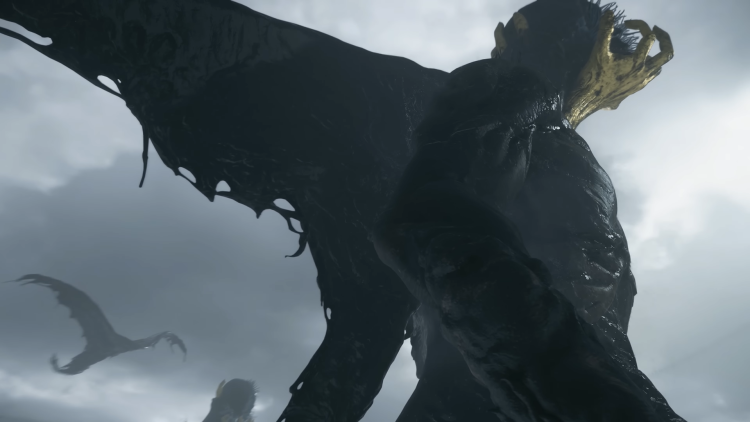Death Stranding 2 Will Let You Skip Boss Fights — Because Kojima Is Making Games Like He Makes Movies
Hideo Kojima, the man behind some of the most genre-bending, expectation-shattering moments in gaming, just confirmed that Death Stranding 2: On the Beach will allow players to skip boss fights after multiple failed attempts. The announcement came via Kojima’s weekly KOJI10 radio show, and it's already stirring up the usual mix of reverence, confusion, and debate that comes with anything the director touches.
If you're stuck on a boss in DS2, the game will apparently offer a "continue" option after a certain number of game overs — not to retry, but to bypass the fight entirely. Players will instead see the battle unfold through a series of still images and narrative text, essentially turning it into a cutscene-style story moment.

Kojima’s Cinematic DNA
Let’s be honest: Kojima has always seen games through a film director’s lens. From the five-hour cutscenes of Metal Gear Solid 4 to the dialogue-heavy dream logic of Death Stranding, his games have never been purely about gameplay. They’re experiences. And sometimes, that experience includes just putting the controller down and watching the story unfold like a movie.
That’s why this new feature in Death Stranding 2 isn’t surprising — it’s an extension of Kojima’s belief that games should be inclusive, narrative-driven, and experiential, even if that means subverting the standard “get good” mentality. He's been blending storytelling and player control since the PS1 era, and this boss-skip system is basically the logical next step.

Kojima has often cited directors like Stanley Kubrick and David Lynch as inspirations, and Death Stranding’s fragmented storytelling, surreal tone, and heavy symbolism reflect that. So does this boss skip feature — not everyone wants to die 20 times trying to learn a pattern. Some people just want to see how the story ends. And Kojima understands that.
Why This Matters (Especially in a Kojima Game)
Boss battles in Kojima games have always been weird. Sometimes brilliant, sometimes frustrating. Think about it:
- The End in MGS3: An aged sniper who can die from old age if you simply wait a few days (or time-skip your console clock). Kojima gave you options — engage in a grueling sniper duel or just cheese it with patience.
- Psycho Mantis in MGS1: Break the fourth wall by switching your controller port, or be stuck in an impossible loop of attacks. Again, a fight that’s more about idea than execution.
Kojima’s boss fights have never been traditional "test your skill" moments. They’re theatrical, metaphorical, and often designed more to say something than to challenge you. Death Stranding 2 continuing that trend makes perfect sense — especially if the fights aren’t meant to be core gameplay pillars but more emotional or narrative beats.

One of the criticisms of the original Death Stranding was that its few boss encounters felt like awkward additions to an otherwise meditative, traversal-based game. If Kojima knows some players just want to get back to walking, connecting, and crying with digital Norman Reedus, why force them into an action sequence they didn’t ask for?
Accessibility or Artistic Statement?
Of course, there’s always going to be a group of people upset by this. “Why even have boss fights if you can skip them?” they’ll say. But Kojima’s response would probably be, “Why not?”

This isn’t about hand-holding — it’s about player agency. More importantly, it’s about recognizing that not every player plays for the same reason. Some want challenge, some want story. Some want to fight Higgs in the rain for an hour; some want to cry over BB and be done with it.
If you think this is a slippery slope, remember that the Soulsborne formula exists for those who want suffering. Kojima’s making art. He’s always prioritized mood and meaning over mechanics, and that’s exactly what this feature reinforces.

What Else Is Going On at Kojima Productions?
Death Stranding 2 is currently 95% complete, according to Kojima, who described its development progress as “10 PM in a 24-hour day.” The game will likely launch in late 2025, and its marketing has hinted at more action, more strangeness, and a deeper exploration of connections — not just between players but between life and death, past and future.
Meanwhile, the Death Stranding movie adaptation is still in the works, with Pig and A Quiet Place: Day One director Michael Sarnoski attached. The film is being produced by A24, so expect high art weirdness with a lot of slow, brooding stares across wastelands.
And then there’s OD, Kojima’s Xbox-exclusive horror title made in collaboration with Jordan Peele. It's shrouded in mystery but very likely to be another experiment in genre fusion and interactive cinema.
Kojima has also teased that his studio will enter “Phase Two” after these releases, moving beyond new IPs into returning favorites and new media. That includes Physint, a codename for what sounds a lot like a spiritual successor to Metal Gear Solid, plus an anime series. In other words, Kojima’s next act could be even more cinematic, more expansive — and somehow, even less traditional.

Kojima’s Way or the Highway
Hideo Kojima continues to remind us that he doesn’t make games the way others do. Whether it’s skipping boss fights, turning combat into poetry, or having Norman Reedus pee in the woods, his design choices always prioritize emotional and conceptual impact over conventional structure.
Letting people skip bosses in Death Stranding 2 isn’t a cop-out. It’s Kojima being Kojima — making space for the story to reach everyone, regardless of skill level. That might be more radical than any difficulty setting.

Comments